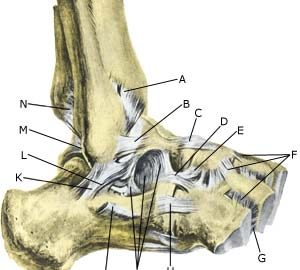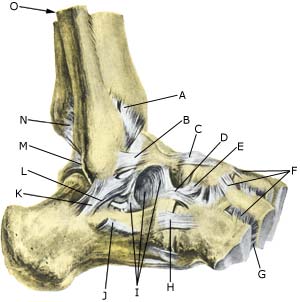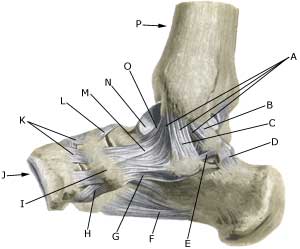|
||
|
||
|
||
| Cause: A violent twist of the joint can in light cases result in a strain or sprain of the ligament, whereas sever cases can result in full or partial rupture or tear.
Symptoms: Pain in the ligament also occuring with load (twist) on the joint which the ligament stabilises. Acute treatment: Click here. Examination: Clinical examination is normally not required in light cases (strain/sprain) with only minimal tenderness, and no discomfort when walking. More pronounced pain will demand examination to exclude bone fracture, bone membrane tear (periosteal avulsion), inflammation of the tendon sheath, concentration of fluid in the joint (traumatic arthritis/synovitis). A normal medical (evt. clinical) examination is usually sufficient in order to make the diagnosis. X-ray will confirm or exclude any suspicion of fracture. Small bone membrane tears are best seen under ultrasound scanning. Treatment: Treatment of uncomplicated metatarsus ligament rupture will normally be conservative (rehabilitation). Bandage: In the rehabilitation phase, tape can be used when running on uneven surfaces or running with rapid directional change begins. The tape has, however, not the same important purpose as for ligament injuries on the large outer or inner ligaments in the ankle, (tape-instruction). Complications: If there is not a steady improvement in the condition consideration must be given as to whether the diagnosis is correct, or if complications have arisen: |



